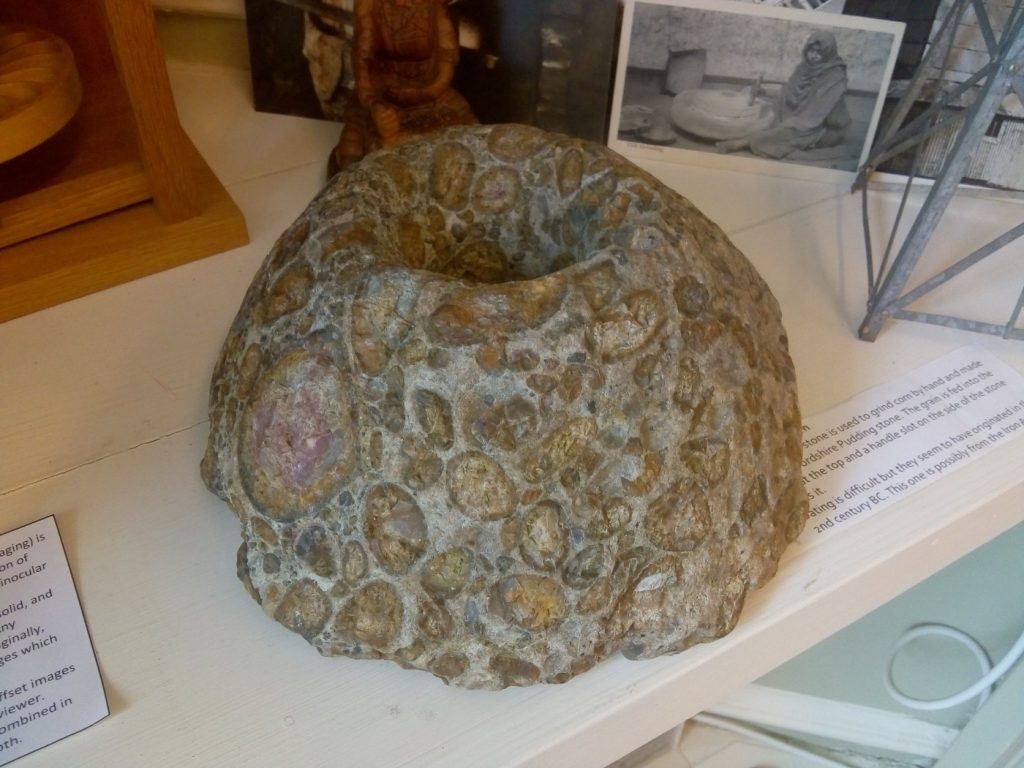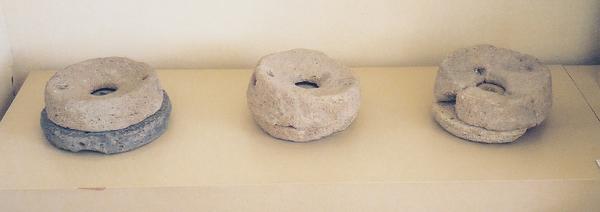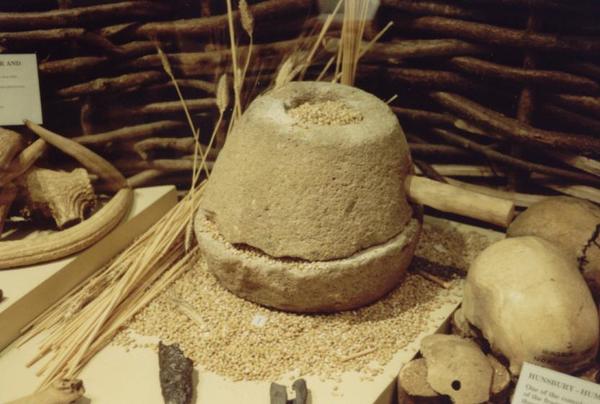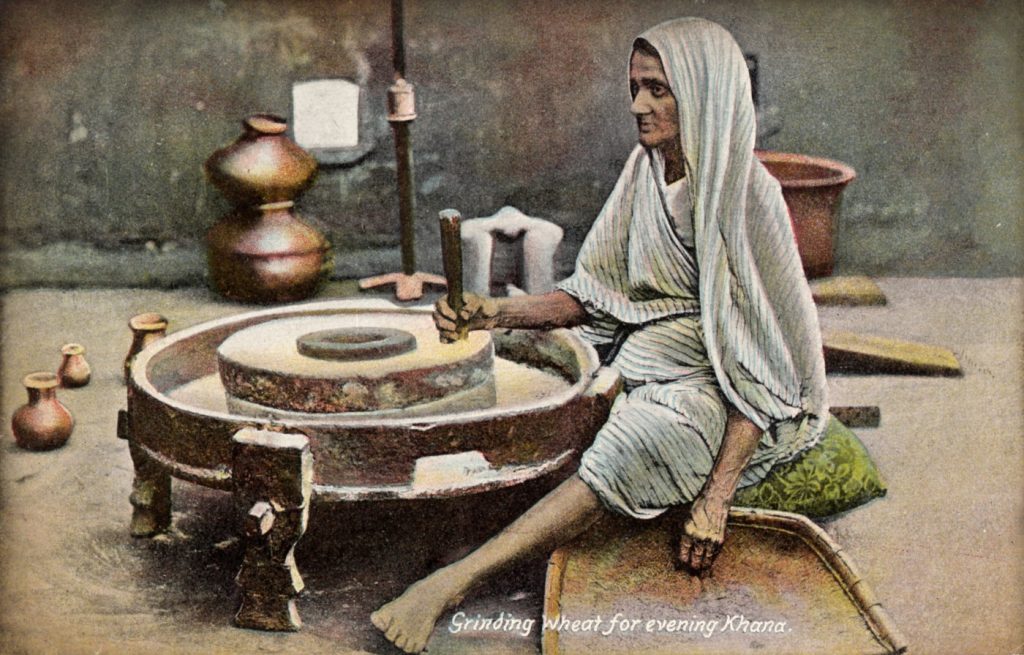This Quern is thousands of years old and is one of the earliest ancestors of modern milling.
This ancient Gem is what is known as a beehive quern. It is probably the oldest item in the Archive’s collections, dating back to the Iron Age (around the second century BC). It gained its name, the beehive quern, as its shape was similar to that of an early straw beehive. Beehive querns had a number of variations – ours is an East Anglian type. However, the regional classification can be misleading as they are also found elsewhere. You can tell the difference by looking at the female section (top section) as it is these that differ the most. An East Anglian type is signified by its highly conical female section.

The material the stone is made of is rather intriguing. It’s made out of a fairly rare type of rock called Hertfordshire puddingstone, which is perfect for milling as it is very hard and slow wearing. It is classed as a conglomerate sedimentary rock: formed millions of years ago as small flint pebbles were deposited in a clay rivers, it then hardened into a very strong mass during the Ice Age.

Use of puddingstone began around the Iron Age (which began 6th-8th century B.C. and finished around the first century A.D.) when the tools required to work the material became available. The base of the top section would be worked to produce a concave shape; the grains were then crushed in the centre and would move to the grinding edge. The use of Beehive Querns began to tail off around 150 AD as they were replaced by the importing of cheap lava querns from North Western Germany.
Hand-powered Querns would continue to be used for many centuries, and in parts of the world are still used today. Throughout antiquity, hand-powered milling was seen as a job fit only for either slaves or women. As part of the feudal responsibilities of the Medieval period, tenants were to use their Lord’s designated mill for grinding their grain, for which they would pay a percentage in kind. However as records of feudal fines demonstrate, some people tried to get around this by using rotary querns.
This curious quern is one of the oldest gems within our collection and represents a significant development within milling technology, paving the way for modern milling.
Gem from the Mildred Cookson Foundation Collection




Related links
- Further Reading: Before steam-driven mills, wind-powered tower mills or horizontal waterwheels the strength of people and animals were used to produce our daily bread. Learn more about the earliest form of milling here.
- A Handy Mill: Muscle-powered mills have been used for thousands of years. Click here to find out more about such a hand mill that fed the Swedish Empire in the depths of a Russian winter.
- From Quern to Computer: From Quern to Computer explores milling from prehistory through to the present day.
